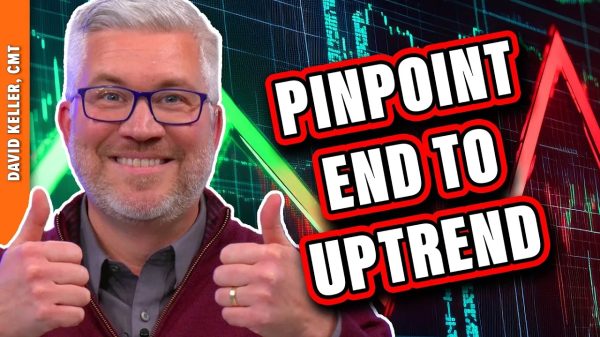With Bitcoin’s price struggling for momentum and the cryptocurrency industry still navigating the impact of a brutal bear market, many investors and traders are wondering whether they should “Sell in May and Go Away.”
For a quick take, “sell in May” is a strategy that is based on the idea that the stock market has historically underperformed in the summer months before rallying in November and towards the end of the year. The question many crypto traders ask is whether this approach does work in crypto.
Two experts from two leading crypto exchanges: Gracy Chen, Managing Director of Bitget, and Robert Quartly-Janeiro, Chief Strategy Officer of Bitrue, shared their insights.
Does the ‘Sell in May’ strategy work in crypto?
The “Sell in May and Go Away” strategy is widely espoused in the broader traditional asset classes, including in stocks, bonds, and commodities, it has also gained traction among investors in the cryptocurrency market in recent years due to the sector’s growing popularity and the potential for significant gains or losses.
Chen and Quartly-Janeiro both agree that the ‘Sell in May’ strategy is not a sure thing in crypto. Chen says that the Web3 industry is constantly innovating, making it difficult to predict market performance. She explained why:
“Professional traders need to constantly follow the latest developments in the industry to stay ahead of the game. Web3 technology is constantly evolving, creating new trading opportunities that may be missed if not actively monitored.”
Chen also points to the short-term perspective as another reason why the “Sell in May and Go Away” approach may not work in crypto. To assess this, she suggests investors compare Bictcoin’s and Nasdaq (NDX)’s daily historical volatility. With BTC, the daily HV has historically fluctuated around 60, while the Nasdaq Index has been around 25.
It means the cryptocurrency’s higher volatility comes with the potential for a higher return in terms of short-term trading profits compared to the NDX. It is why experts believe the “Sell in May” strategy may not be that effective when it comes to the Web3 industry, the Bitget exec added.
Quartly-Janeiro adds the “Sell in May and Go Away” strategy in crypto has no effectiveness and “lacks consistency.” He points to insights from exchange data on the historical performance of Bitcoin as evidence of this.
For example, in May 2019, Bitcoin traded at around $5,500. However, as traditional markets struggled over the summer, BTC price rose by over 90% to trade above $10,000 by September.
The cryptocurrency also gained between May 2020 and October 2020. Of course, Bitcoin fell 28% between May 2018 and September 2018 (from around $9,000 to around $3,800). However, it had jumped from $1,700 to nearly $8,000 between May and November 2017, highlighting the inconsistency.
Why do people believe in the ‘Sell in May’ strategy?
Chen says that this is because the strategy has worked in traditional markets for many years. European and US markets have in the past seen weaker performances during the summer, with a reduction in trading volumes as investors and traders pack up for vacations.
Quartly-Janeiro adds that the strategy may also appeal to investors who want to avoid the risk of market volatility during the summer months.
So they sell their stocks in May with the aim of reinvesting profits in November when markets have historically exhibited stronger performances. The Bitrue CSO explained that factors influencing this behaviour include seasonal fluctuations in consumer spending, corporate earnings, and investor sentiment.
2022 was a brutal year for crypto. Does it change anything?
The events of 2022 undoubtedly impacted the crypto market, both Chen and Quartly-Janeiro say. The demises of LUNA, Three Arrows Capital and the bankruptcies of Voyager, Celsius and FTX (read about what happened here) dented investor confidence. With prices plummeting as sentiment tanked amid the collapses, the cryptocurrency market lost over $2 trillion in market capitalization.
What does this mean for the market? Chen says the negative impact of the turbulence saw institutional investors exit crypto enmass. As such, the industry is likely to remain in a liquidity-strained environment for a while. Chen said:
“Despite this, many financial giants have decided to expand their services into the cryptocurrency space, which could create a path for institutional funds to re-enter the crypto market, provided there are favorable macroeconomic conditions.”
According to Quartly-Janeiro, 2022 was a turbulent year for crypto, with highs and lows, including several major hacks and market volatility.
On what observations crypto can draw from the evens of 2022 and from across the market, he explained:
“Firstly, it is evident that the crypto industry is not isolated from macroeconomic factors, such as interest rate hikes by the Federal Reserve, which can have significant impacts on crypto markets. Secondly, excessive leverage can result in contagion, creating a domino effect that affects multiple institutions and markets. Thirdly, while decentralized finance (DeFi) has demonstrated resilience, continuous economic and technical auditing is necessary to ensure the security of customer funds and prevent smart contract breaches.”
In his opinion, crypto’s sustainability cannot rely on mere price speculation; there is a need to ensure projects deliver real-world utility and value.
Should you sell or hodl?
Ultimately, it’s up to individual investors when it comes to the ‘Sell in May and Go Away’ strategy, Chen and Quartly-Janeiro opined. They recommend that perhaps it’s best for investors to do their own research, taking the approach they deem right for their investment goals.
The post Should you “sell in May and go away?” Here’s what crypto experts say appeared first on Invezz.

























